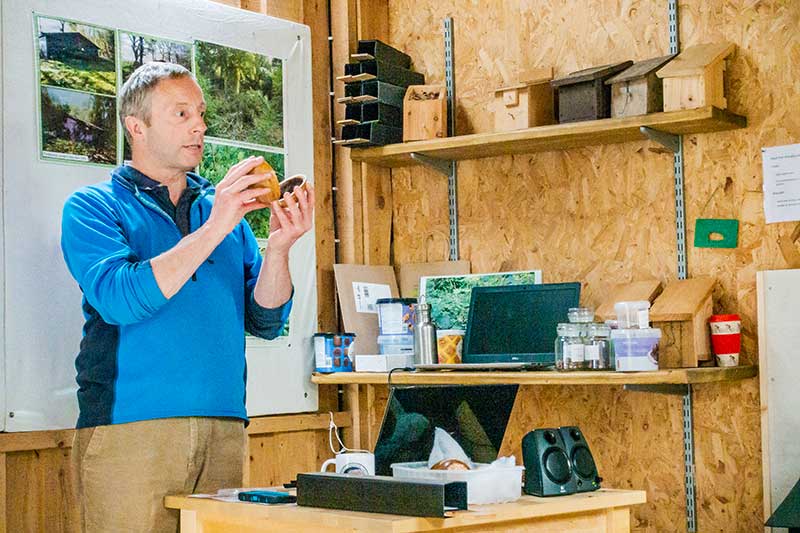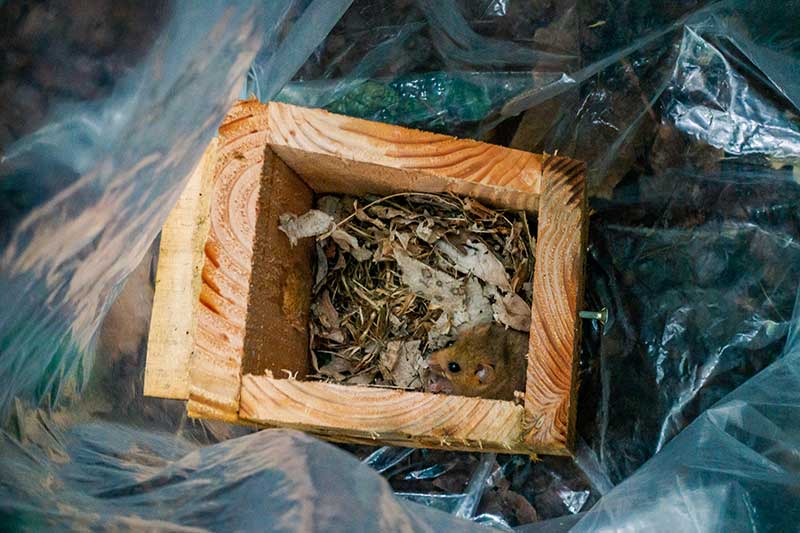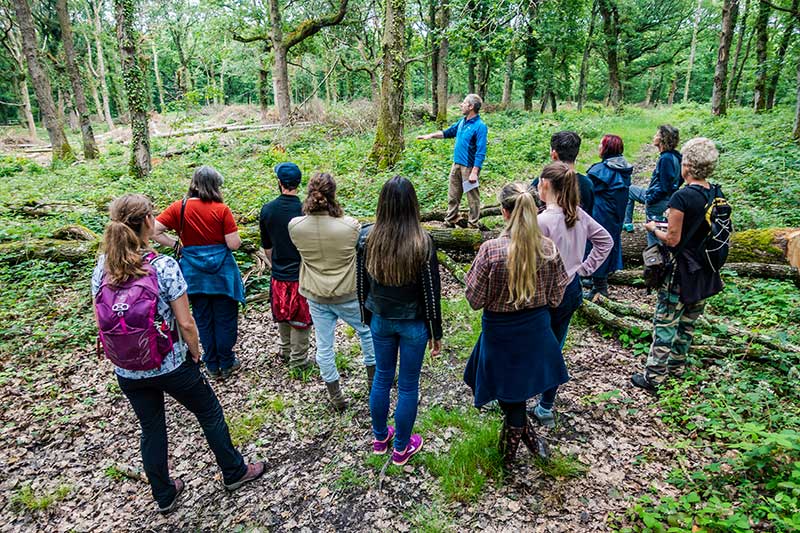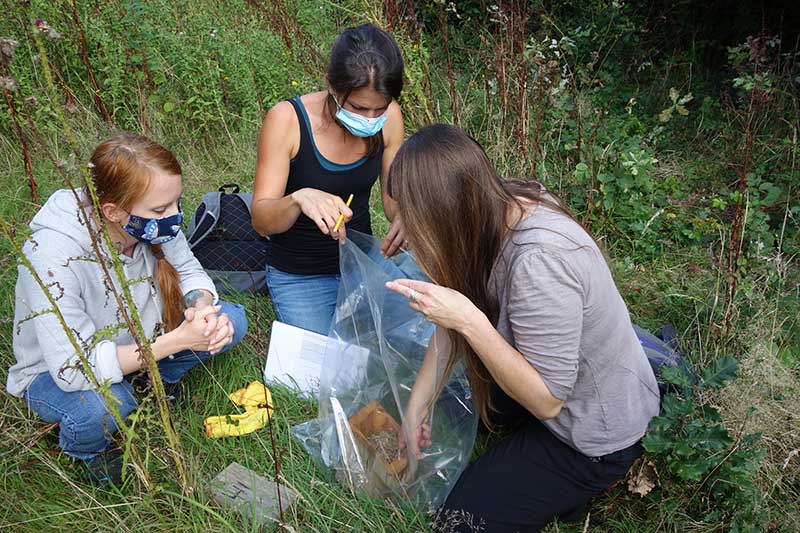2020 marks thirty years of the National Dormouse Monitoring Programme (NDMP) which is an incredible achievement. And it’s thanks mainly to our volunteers. Their dormouse data enables us to produce a robust, current state of hazel dormice in Britain. An achievement, because getting a dormouse licence isn’t easy.
Dormouse licences explained
People usually want a licence for one of two reasons. They’re either a volunteer wanting to set up, or help out, at an NDMP site. Or they’re professional ecologists needing a licence to help protect dormice on projects they are working on. There’s much misunderstanding about the types of licences available. People refer to survey, disturbance, management and mitigation licences. But in truth there are only two: disturbance and mitigation licences. And getting a licence isn’t easy for several reasons.

Ian White delivering presentation. Image by Frazer Waller
Firstly, both require letters of support from two referees. These referees must have seen the trainee in the field several times. Secondly the rarity of dormice at many sites makes it time consuming and difficult for trainees to obtain experience of handling and dealing with dormice at all their life stages. Thirdly, there aren’t always many trainers on hand. Many monitors may be happy just monitoring their site and don’t wish to take on trainees whilst others may have a long waiting list of trainees needing help.
Dormouse training log
To help people understand what is needed for a licence, PTES, along with Natural England and Natural Resources Wales, developed the Dormouse Training Log about ten years ago. This has been very useful for trainees to record what they have achieved and for trainers to understand how experienced their helper is. We also recommend anyone wanting to train for a licence attends a dormouse ecology and conservation course. These are run by PTES, the Mammal Society, CIEEM and others. This year, due to Covid restrictions, we were unable to run our one-day course but we are planning an online course in November.

Dormouse in nest box during check. Image by Frazer Waller
Professional courses
Since 2014, PTES has also run two three-day courses in the autumn, aimed at professional ecologists. These courses include information included in the one-day course as well as giving trainees an opportunity to gain experience checking nest boxes and handling dormice. We usually take nine delegates and three trainers.

Exploring Briddlesford woods. Image by Frazer Waller 
Delegates wore face masks when handling the animals
It is quite a sociable course. We spend all day together talking dormice and then going out in the evening for dinner and more dormouse chat. But this year was different. We managed to run the course with only four delegates and two trainers, keeping within government guidelines of no more than six people from different households meeting in an outdoor space.
We all wore face masks when handling the animals, and used gloves and hand sanitiser. All of which made it tricky to train but not impossible. We visited three different woodlands sites and saw 29 dormice covering all life stages within a variety of dormouse habitats. All in all, a great training experience. Find out more about our online ecology course and our in-the-field training courses here.
Written by Ian White, Dormouse Officer at PTES
Main image credit Frazer Waller
